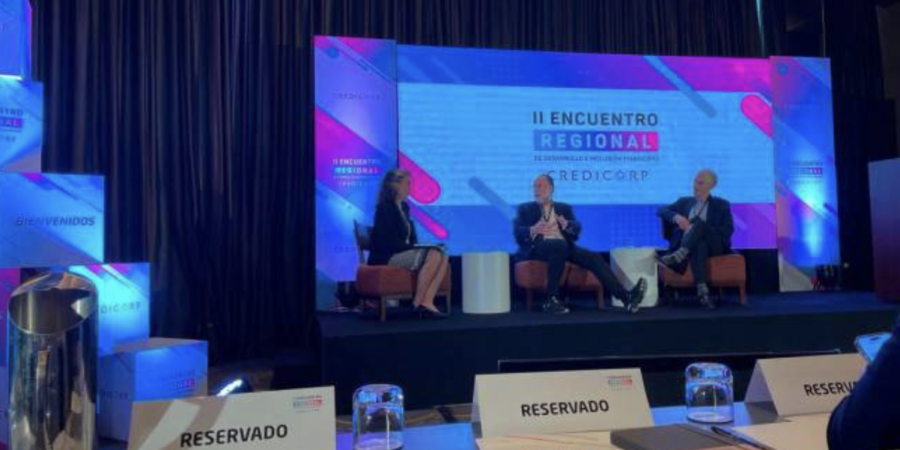The fourth edition of the Financial Inclusion Index (IIF), prepared by the Credicorp Group of Peru together with the consulting firm Ipsos, shows that financial inclusion in Panama presumes a high level. The country rose from third place to second with a score of 56 points this year, chaired by Chile with a 58.3. Of the four editions of the IFF, the isthmus has headed the ‘ranking’ on two occasions (2021-2022).
The main premise that pushes the Peruvian financial company to launch this evaluation is to obtain a “diagnosis in which to influence and give inputs to decision makers,” says Gianmarco Ferrari, CEO of Credicorp. “During these four years, the IIF has become a key tool to understand the challenges posed by countries in terms of financial inclusion. The results show the role that digitization is playing in this area and the urgency to strengthen those plans that decentralize the services of the formal financial system,” he adds.
In addition to a significant increase in its overall financial inclusion score, Panama also records advances in access to and use of financial products and services compared to the previous year. This is mainly due to a greater holding of credit products in the financial system and the use of banking means to make transfers and receive income.
Today, 47% of Panamanians are at an advanced level of financial inclusion, 11 percentage points more than in 2023. As in 2023, it is one of the countries with the highest number of people that saves within the financial system (33%), up 5 percentage points compared to last year. Likewise, Panama (37%) along with Argentina (40%) lead in the possession of credit cards.
After Argentina, Panama is positioned as the second country in the region for the adoption of mobile wallets and payment applications, 63% of the population has any of these tools. In the same way, 39% of Panamanians surveyed indicated that they usually pay for products and services with digital wallets.
In the access dimension, Panama stands out as one of the countries where citizens have the greatest knowledge of financial products, with an average of more than 10 known products per person (the average is 8 at the regional level).
In the dimension of use, the study shows an increase in the number of Panamanians who use formal means for transfers, going from 33% to 40%, and a decrease in those who do not use them.
However, in the region, cash is still the preferred method for payments for products and services, regularly used by 96% of respondents.
Savings and trust
In terms of savings, Panama shows an increase in the number of savers in the formal financial system, rising from 28% to 33%, resuming the trend of the first two editions of the IIF and maintaining leadership as the country with the largest number of people saving. As for the receipt of income through the formal financial system, 60% of Panamanians receive them in bank accounts in their name in 2024, 10pp more than in the previous edition.
As for the perceived quality dimension, confidence in financial institutions in Panama has shown constant growth since the first edition of the IIF in 2021 and maintains it as the leading country in this category. In 2024, 49% of Panamanians said they trusted their financial institutions, an increase of 4 percentage points compared to the previous year.
The study collected collects data from eight Latin American countries: Argentina, Bolivia, Chile, Colombia, Ecuador, Mexico, Panama and Peru. This is built from three measurement dimensions: access, use and perceived quality of the financial system. In this way, it focuses on demand, since it collects information directly from citizens through household surveys. To do this, more than 13,000 people over 18 years of age were interviewed in the 8 countries evaluated, and in the case of Peru, 5,000 people.
The report was presented this Monday in Lima, during the II regional meeting of development and financial inclusion in which crucial issues for the region were touched on, such as the challenges and opportunities for economic development in Latin America and artificial intelligence as a mechanism of inclusion. An event that brought together bankers, economists and the main media of each analysis region.
